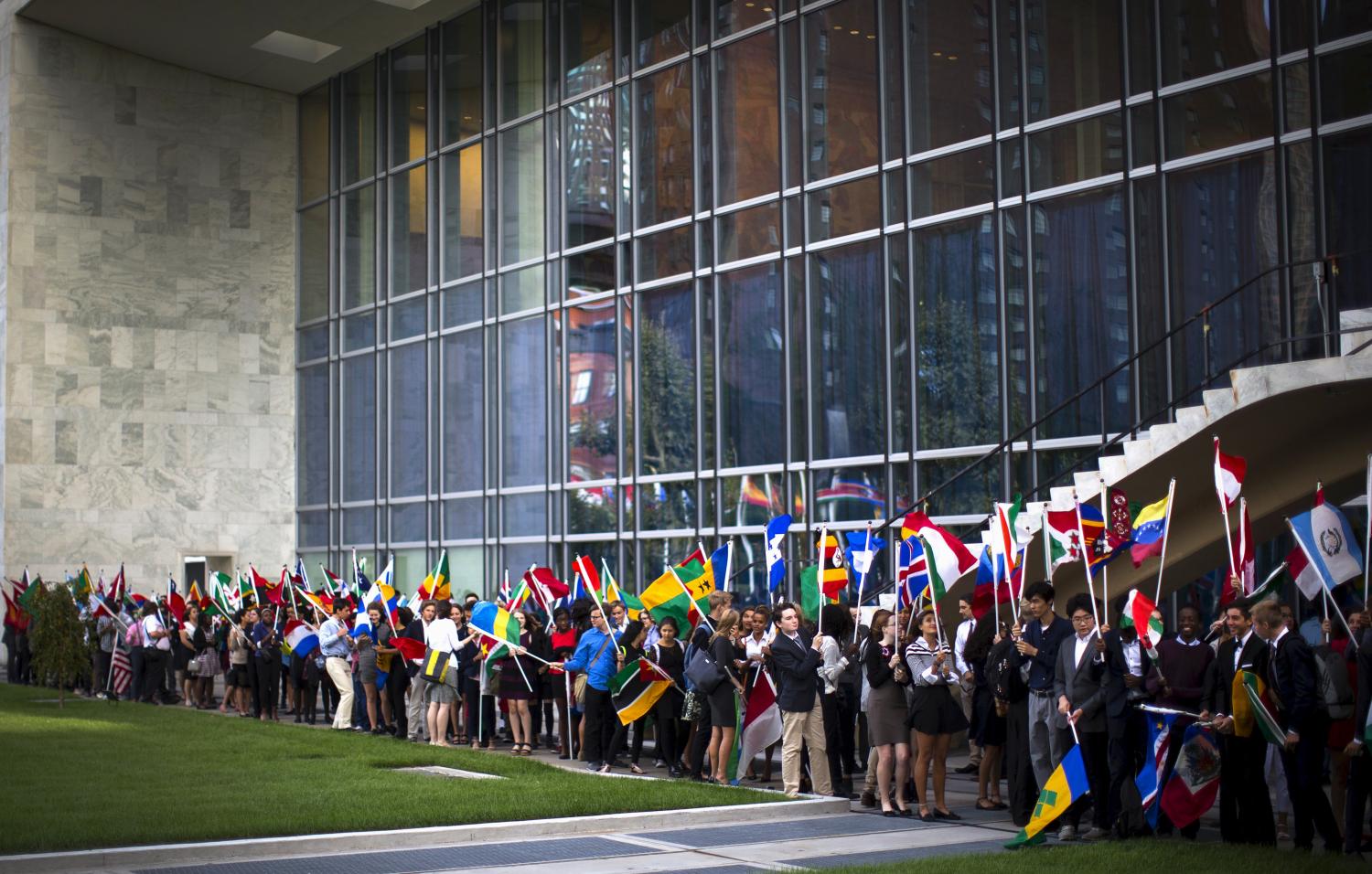INTRODUCTION
Within a span of a few months between November 2011 and June 2012, world leaders and senior policymakers will participate in a half-dozen international conferences on economic development: the Rio+20 Conference on Sustainable Development in Brazil next June; G-20 leaders’ summits in France and Mexico; the fourth High Level Forum on Aid Effectiveness in Busan; and two IMF/World Bank Development Committee meetings.
The events are hosted by four distinct global groupings: the United Nations, the Organization for Economic Cooperation and Development (OECD), the Bretton Woods institutions, and the G-20. Each of these groups has differing membership, processes, work-streams and governance structures. Together, they can be viewed as four pillars of an international architecture for development cooperation. In each pillar, there have been shifts in form and focus to respond to changes in the global context for development that partly reflect successful development processes in many parts of the world. For example, only 10 percent of the world’s poor today live in countries that are stable and low income but the majority of international development assistance strategies are designed for these conditions. Forty percent of the poor live in fragile or post-conflict states but it is only recently that special approaches for these states have been articulated. Another 50 percent of the poor live in stable, middle income countries but there are few recognized norms for development cooperation there.
In another sign of change, official aid is now a small fraction of resources for development, with foreign investment, trade, remittances and private flows adding to the resources of even the poorest countries. Technology has dramatically altered opportunities for development. And developing countries themselves have become far more capable of articulating and implementing their own development strategies. “Country ownership” is the new normal for development, implying that cooperation must take place at the country level as well as in international spheres. Many developing countries are also simultaneously recipients and providers of development cooperation and are bundling political, trade, investment and development objectives together in new ways.
The global development architecture is struggling to adapt to remain relevant to these new conditions, but while new processes have been individually useful and appropriate, they have not been coordinated with each other. Today, global governance for development cooperation suffers from unclear mandates for each pillar, mission creep and overlapping responsibilities, turf battles and institutional rivalries, and ultimately a diffusion of resources and effort that is detrimental to better development outcomes. It also suffers in its lack of effective inclusion of non-state actors who are increasingly important for development.
In his report to the G-20 on governance for growth, British Prime Minister David Cameron poses the issue as: “how are we going to clear away the obstacles to global growth.” His response is that “the answer is not to be found in elaborate new institutions and global architecture. We have the machinery that we need already. No, what we need above all is …political will… to act together, and to build the consensus we need.”
Building consensus and action represent two important functions of global governance, but they seem to require different structures. Consensus building necessitates an inclusive process where all stakeholders have an opportunity to participate. Action requires a critical mass of stakeholders to move forward on an agenda and can be paralyzed by too large and inclusive a process. The tensions are clear in the development arena. Development is a cross-cutting issue with many stakeholders. The OECD has identified over 200 multilateral development agencies along with 127 bilateral development agencies from DAC member countries. In addition, there are a growing number of non-DAC official agencies, thousands of international NGOs, maybe tens of thousands of official government agencies in developing countries themselves, hundreds of thousands of southern civil society organizations, and millions of private individuals and businesses active in development.
Yet at the same time as the number of development stakeholders proliferates, the concentration of official development resources remains high: the top 20 development agencies in the world account for 60 percent of total gross official development aid (ODA) disbursements, while the top 20 donors account for 93 percent of ODA. Building consensus on actions and approaches across all stakeholders would be an unreasonable effort (and probably undesirable given the need to innovate), while restricting debate to a few large donors reduces legitimacy and buy-in from others and risks losing the political backing that mass social movements and a public engagement can bring.
The broad challenge for the global governance of development is how to build consensus, mobilize resources, align incentives, and get effective implementation across these multiple groups. There is no denying the need for some form of global governance to coordinate efforts better. In addition to the challenge of meeting the Millennium Development Goals by 2015, broad-based development has now become a key mechanism for achieving other global objectives. “Strong, sustainable and balanced global growth,” the G-20 objective, depends on the performance of dynamic emerging markets. So does the reduction of global carbon emissions, and the eradication or reduced incidence of global infectious diseases. Financial stability, international trade and peace, security and fragility are other global challenges that involve economic development and growth. In all these cases, the coordination of global action to some degree is probably desirable. For the provision of global public goods it is more important, while for action at individual country levels it may be less important. Overall, to achieve results at scale, some degree of coordination and alignment of incentives is necessary.
For the time being, global governance of development cooperation is focused on coordination among national states and each of the four pillars revolves around official representation and agencies. These actors, if well organized, can potentially organize themselves around a broad array of development interventions, including aid, trade, investment, diplomacy and defense. However, in practice, such “whole of government” approaches are not implemented with the needed coherence, so even in official forums the representative of a country may speak authoritatively on only a small range of issues. In the four pillars identified above, a typical country may have four different representatives: foreign affairs handling U.N. matters; finance for IMF and World Bank issues; development ministers for OECD’s Development Assistance Committee (DAC) and the prime minister or president’s office for the G-20. This example illustrates the complexity of the governance arrangements for development. They should be built around nation states, but coherent across sectors and inclusive of a range of non-state stakeholders.
No single governance structure can fulfill all these roles. So it is reasonable that there should be several pillars of the global development architecture to make sure all the key functions are provided in an efficient and effective way. However, the pillars currently compete for resources and influence with each other, resulting in overlap in some areas and gaps in other areas. But there is now an opportunity to promote greater clarity in how the various pillars might support each other. First, given that the world’s attention will be focused on so many high-profile development forums in the next few months, it would make sense to promote common or at least coherent messages on development. Second, the agendas and scope of each forum could be structured in a way that builds on an assessment of the comparative advantage of each pillar, to encourage some rationalization of the overall development architecture in an evolutionary way. It is important to stress the comparative nature of the advantage because the tendency at present is for each pillar to step into areas wherever they perceive a need or gap. What is needed is some shared understanding of how the four pillars can work together better to complement rather than compete with each other.
The Brookings Institution is committed to quality, independence, and impact.
We are supported by a diverse array of funders. In line with our values and policies, each Brookings publication represents the sole views of its author(s).





